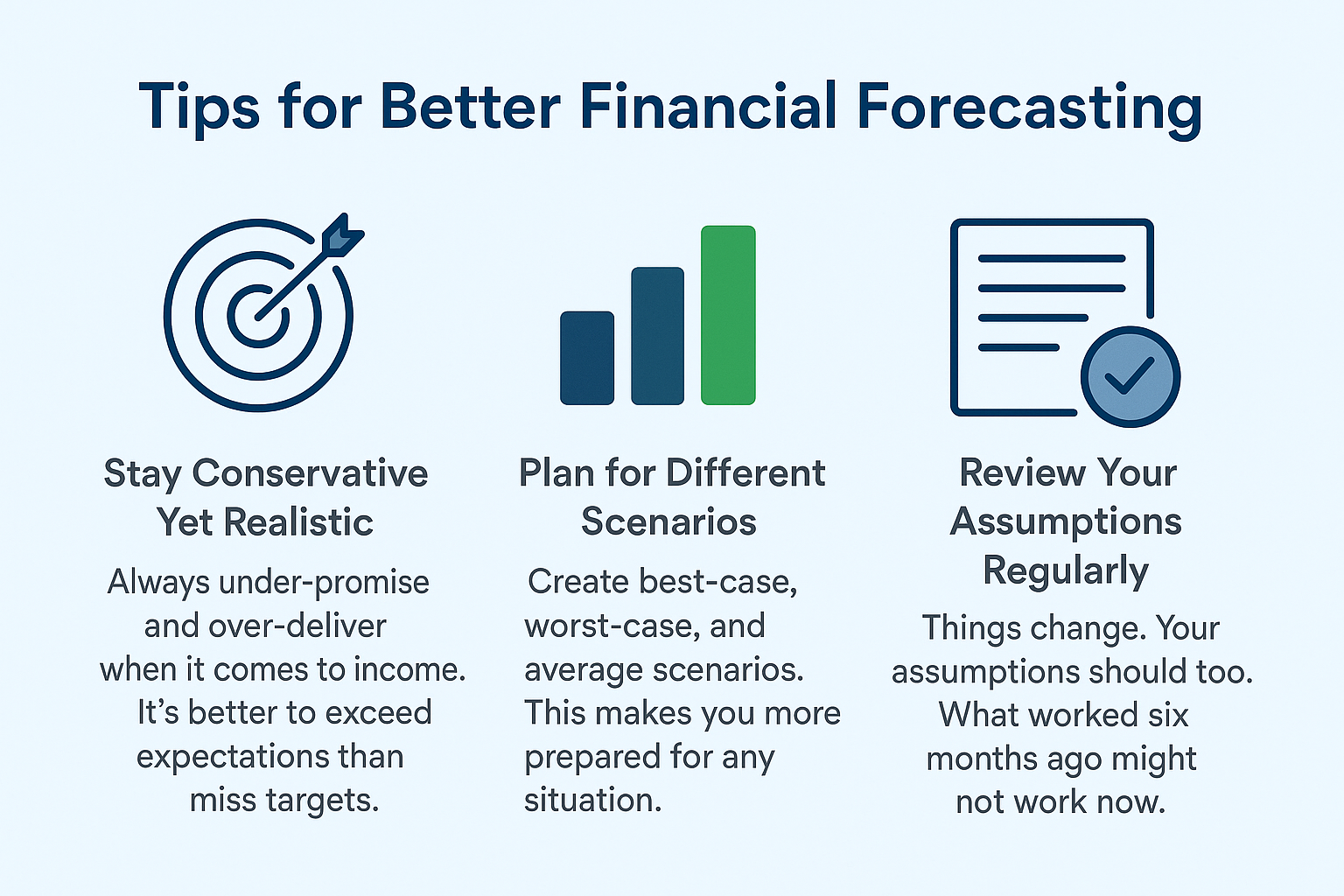
Financial Projections UAE: A Guide for Small Business Owners
What Are Financial Projections?
Think of financial projections as a roadmap for your business finances. It’s a set of estimated financial statements—basically, your best guess about where your revenue, expenses, and cash flow will land in the future. Whether you’re just starting or planning your next big move, projections are essential to understand how your business will perform.
Why Financial Projections Matter in the UAE Market?
In a competitive and rapidly growing market like the UAE, planning ahead financially isn’t just smart—it’s necessary. From meeting VAT regulations to attracting local investors, financial projections in UAE help small business owners stay one step ahead. It’s how you turn a vision into a scalable business.
The Role of Financial Projections for Small Businesses
Startups vs. Established Businesses
Startups use financial projections to map out early growth and understand when they’ll break even. For more established businesses, projections help plan expansions, new services, or even entry into new Emirates.
Benefits of Forecasting Your Finances
- Clear financial direction
- Early warning signs of trouble
- Better decision-making
- Enhanced investor and lender confidence
- Smarter resource allocation
Core Components of Financial Projections
Income Statement Projections
Also known as the profit and loss statement, this shows your projected revenue, cost of goods sold, and operating expenses. It’s what tells you if your business is expected to make a profit.
Balance Sheet Projections
Balance sheets offer a snapshot of your financial position—assets, liabilities, and equity—at a specific point in time. It’s essential for understanding financial stability.
Cash Flow Forecast
This forecast shows how much money is expected to come in and go out of your business. In the UAE, cash flow can fluctuate with VAT payments and seasonal sales patterns.
Break-Even Analysis
When will your business start making profit? This tool helps you find that magic number where total revenue equals total costs.
How to Create Accurate Financial Projections in UAE
Gather Relevant Business Data
Look at your past performance (if available), industry averages, and competitor benchmarks. Don’t just guess—make data-driven assumptions.
Define Realistic Goals
Set achievable milestones based on current resources. Over-ambitious revenue numbers only set you up for failure.
Analyze Market Trends in UAE
Stay up to date with economic and industry-specific trends in the UAE. Tourism booms? Expo events? Ramadan seasons? These all affect your bottom line.
Use Accounting Software and Tools
Tools like QuickBooks, Zoho Books, and Xero help automate much of the projection work. They also ensure your data is up-to-date and VAT-compliant.
Common Mistakes Small Business Owners Make
Overestimating Revenue
It’s tempting to assume the best-case scenario. But overestimating income can lead to overspending and under-planning.
Ignoring Cash Flow
Profit doesn’t mean cash. Many profitable businesses fail because they run out of cash. Always monitor your cash inflows and outflows.
Lack of Contingency Planning
What if a major client delays payment? Or what if VAT rates change? Always plan for the unexpected.
Tools and Templates for Financial Projections
Excel-Based Templates
For those who like control, Excel is perfect. You can find free templates tailored for UAE businesses.
Cloud-Based Financial Planning Tools
Apps like LivePlan and Float help you visualize your finances and generate reports for banks or investors.
Industry-Specific Projection Models
If you’re in retail, hospitality, or e-commerce, industry-specific tools can help you get more accurate forecasts.
Importance of Localized Projections in the UAE
Adapting to UAE Tax Laws
Financial projections must account for VAT and Corporate Tax where applicable. Non-compliance can cost you dearly.
Considering Economic Factors and VAT
From fuel prices to tourism trends, UAE’s economic conditions fluctuate. Add VAT implications to the mix, and accurate forecasting becomes a necessity.

Tips for Better Financial Forecasting
Stay Conservative Yet Realistic
Always under-promise and over-deliver when it comes to income. It’s better to exceed expectations than miss targets.
Plan for Different Scenarios
Create best-case, worst-case, and average scenarios. This makes you more prepared for any situation.
Review Your Assumptions Regularly
Things change. Your assumptions should too. What worked six months ago might not work now.
Future of Financial Projections in the UAE
AI & Automation in Forecasting
Smart tools powered by AI are making forecasting faster, more accurate, and dynamic. This tech is especially useful for small businesses with limited resources.
Regulatory Changes and Digital Shifts
With increasing digital adoption and evolving tax regulations, staying up to date with your projections has never been more important.
Conclusion
Financial projections in UAE aren’t just spreadsheets—they’re your business’s future in numbers. Whether you’re applying for funding, planning for growth, or just trying to stay afloat, accurate projections help you make smart decisions. If you’re a small business owner in UAE, it’s time to treat your financial forecast like your business GPS—without it, you’re flying blind.
FAQs
What’s the difference between a financial forecast and a projection?
A forecast is based on current conditions, while a projection involves assumptions about future scenarios. Both are useful, but projections are more speculative.
How long should my financial projection cover?
Ideally, 3–5 years. But for startups, even 1–2 years of monthly forecasts are a great start.
Do I need financial projections if I’m not seeking investors?
Yes! Projections help with budgeting, goal-setting, and managing operations efficiently.
Can I do my projections myself?
You can, especially with tools and templates. But if it gets complex, consider hiring a professional for accuracy.
How often should I update my projections?
At least quarterly—or whenever you have major business changes or market shifts.
